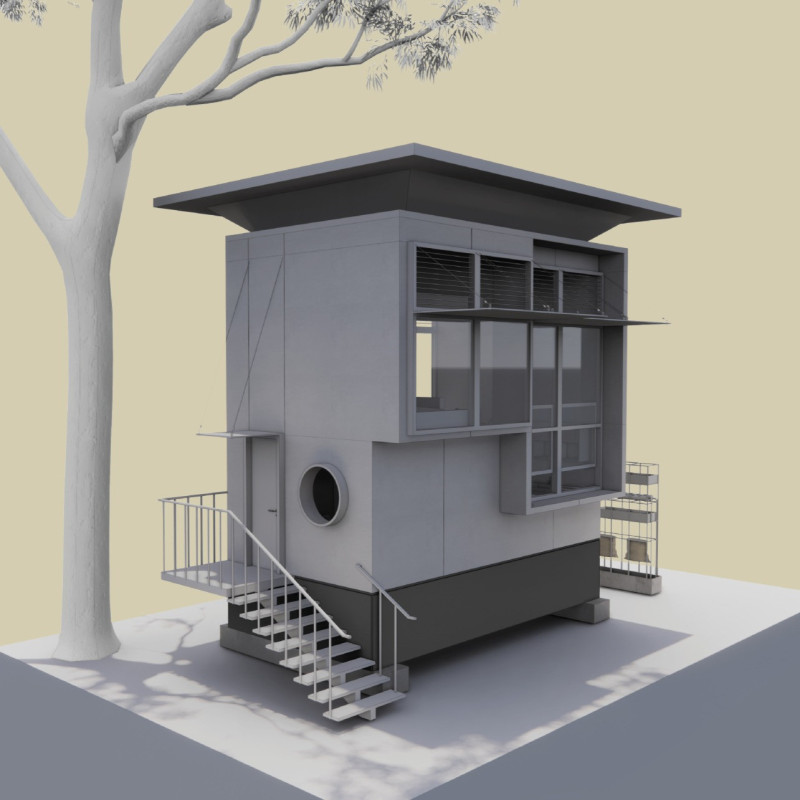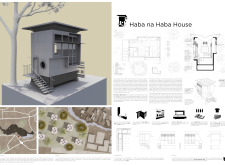5 key facts about this project
# Analytical Report on Haba na Haba House
## Project Overview
Located in the informal settlement of Kibera in Nairobi, Kenya, the Haba na Haba House addresses the urgent need for affordable housing within densely populated urban contexts. It serves as a prototype for sustainable living, designed to accommodate the realities of rapid urbanization and the challenges faced by marginalized communities. The project emphasizes a gradual approach to housing development, reflecting the Swahili translation of its name, which means "little by little."
## Spatial Organization and Flexibility
The spatial strategy of the Haba na Haba House is characterized by a modular configuration that allows for adaptation as the needs of its inhabitants evolve. Key design elements include spacious living areas that support multifunctional use, private quarters that maintain a sense of intimacy, and flexible spaces encouraging creative re-purposing. This thoughtful organization promotes interaction among residents while ensuring privacy, with an open plan that facilitates natural light and ventilation throughout the structure.
## Sustainable Material Choices
Sustainability is a core focus in the material selection for the Haba na Haba House, with an emphasis on durability and environmental responsibility. Notable materials include concrete for structural integrity, galvanized steel for support elements resistant to corrosion, and wood as a warm interior finish. Glass features prominently in fenestration to enhance daylighting. Furthermore, insulation materials ensure thermal comfort, while waterproofing membranes protect against moisture. Together, these choices reflect an intention to create a resilient and energy-efficient living environment.






















































